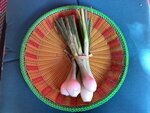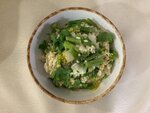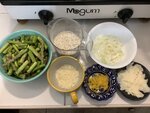 Narrowsburg
NarrowsburgLight Rain Fog/Mist, 43°
Wind: 8.1 mph
 Narrowsburg
Narrowsburg



What and where is spring? I can easily describe winter, fall and summer, but for decades I couldn’t conjure up specific memories of the spring of my 1960s childhood. During that season, the temps hovered around 70; the grass grew greener; flowers sprouted from the earth, their petals unfolding into brilliant colors. The sky turned clear and blue.
We packed away our winter clothing and donned short sleeves, culottes, and lighter-weight pants. Our neighbors emerged from their houses to chat with others on the block, and we kids took to the streets after school to play Spud, Red-Light Green-Light or Simon Says—and maybe catch a quick, clandestine kiss from one of the boys down the block in his parents’ garage.
Nowadays, my sister Janet and I refer to the end of March and much of April as the mud season. Returning home from Peck’s supermarket, the car’s tires make deep, wet troughs in the driveway and we walk tentatively to the trunk to retrieve our grocery bags, trying not to slip on the wet grass that leads to the patio.
April showers often continue into May and the sky seems to reflect the muddy earth below. Looking up is somewhat depressing. Where is the greenery we crave?
Yet there is always hope and anticipation as we turn the calendar pages, that an old-fashioned spring will arrive again. Fritz and Anne from Domesticities have already reached out as early as February so I can order several different tomato plants with glorious names like Orange Icicle, Cherokee Purple, Green Zebra, Aunt Ruby, Brad’s Atomic and German Johnson. I order cucumbers from them as well. I know that Jeffrey at Wild Yarrow Farm will soon have what looks like acres of herb plants, including many unusual varieties. He is extremely knowledgeable and helpful when trying to choose from his vast inventory.
My garden is small, but I always grow five or six types of tomatoes as well as cucumbers that are small with thin skins and few seeds.
Herbs transform my spring and summer cookery in a way that never ceases to amaze and delight me.
There are people I know who look forward to what they cook in winter: hearty stews thick with gravy and root vegetables, a multitude of soups, roasted chickens and baked casseroles. But I’m a gal who is drawn to lighter fare, and particularly the vegetables that are the harbingers of spring. The farmers’ market comes alive, literally, with bursts of vibrant, verdant vegetation.
About a decade or so ago, kale popped up out of nowhere and became the darling of greens with its intense, deep color and flavor. I like the curly variety, but am particularly taken with the long, dark leaves of Tuscan kale, also called cavola nero. I throw the leaves (picked clean of their stems) into a pot of boiling salted water and cook them for about 5 minutes. Then I scrape them into a large sieve, after which I plunge the leaves into an ice water bath. I drain them again, wrap them in a kitchen towel and use all my strength to squeeze every bit of water out of them. After chopping them coarsely, I use the pieces in quiches, omelets, stratas (savory bread puddings) and such.
But I never ate raw kale until this year. I bought a bunch of curly-leaf kale, washed and dried it well, then cut out the cores (which I discarded) and tore the leaves by hand into bite-sized pieces. I placed them on a large platter. Next, I made a sprightly vinaigrette into which I dropped a crushed garlic clove. I set that aside to let the flavors meld, and over the kale leaves I sprinkled tart dried cranberries; slivered, toasted almonds; and shards of Parmigiano-Reggiano cheese made with a vegetable peeler.
I was amazed at the final result. I had produced an extraordinarily vibrant-tasting salad with lots of different textures. The kale, sturdier and more flavorful than lettuce, is chewy rather than crisp and full of the taste of spring.
Each week at the farmers’ market I happily browse the stalls for more spring vegetables as they become available. Spring onions, which are similar to scallions (but much sweeter) have a substantially larger bulbous mini-onion at the end of the stalks and are bright white. They are delicious grilled, which brings out even more of their sweetness, as the sugars caramelize, but when I saw a beautiful bunch of slim asparagus, I hit upon the idea of using both vegetables in a risotto that would be a true celebration of the start of spring. And it was, particularly when I finished with a splashy-looking garnish of freshly grated lemon zest. The dish sprang to life, and I realized there is such a thing as spring. And it was here.
Comments
No comments on this item Please log in to comment by clicking here